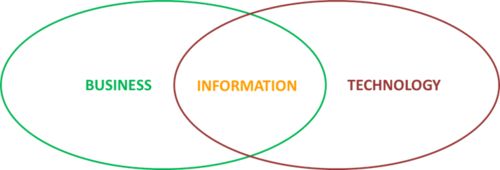
Gartner 2015 predictions on BI & Analytics market and my takeaways
Every year I look to Gartner’s predictions on the Business Intelligence and Analytics market, not only because I want to know what’s right and where the market is headed but also to learn what maybe wrong and what can practitioners like me learn from it.

Gartner 2015 predictions on BI & Analytics market and my takeaways
Every year I look to Gartner’s predictions on the Business Intelligence and Analytics market, not only because I want to know what’s right and where the market is headed but also to learn what maybe wrong and what can practitioners like me learn from it.
Here are 3 trends and my takeaways from Gartner’s predictions for 2015 –
Trend 1: Balance of power continues to shifts from IT to Business, driven by Data Discovery and Visualization tools – Gartner’s 2015 prediction is in line with what they has been saying for quite some time now, i.e., traditional business intelligence (BI) and analytic models are being disrupted as balance of power shifts from IT to Business. Nothing surprising here, looking at how Business centric data discovery and visualization tools – e.g., Tableau, QlikView, have systematically disrupted incumbent IT-centric BI platforms – e.g., IBM Cognos.
Take away – While IT centric BI platforms thrived in days of data aggregation and mass distribution of pre-prepared data and reports, Business centric BI tools have started tilting the equation in favor of agile self-service in solving business problems with data analytics. It’s putting the business data expert and power user at the forefront while changing the BI landscape from “reports for the masses”, to “analytical insights for the classes”.
Trend 2: Data preparation capabilities are emerging that will provide business users and analysts the ability to extend the scope of self-service – One of the biggest challenges faced by any enterprise seeking business insights from data is the need to depend on a central IT organization. IT traditionally uses Extraction, Transformation and Loading (ETL) tools and routines for bringing data from across the enterprise into a data warehouse, using tools such as Informatica, IBM InfoSphere DataStage. The problem with this approach has been (i) business has to get into an IT queue and wait, (ii) clunky tools that requires IT skills for even basic usage; and (iii) data transformation (if applied during the ETL process) becomes outdated quickly as business conditions change. Typically the process of Data Preparation achieves two objectives, (i) aggregates enterprise data from across different source systems into a data warehouse for ease of end-use and (ii) attempts to create a single version of the truth within a data warehouse. Emerging self-service Data Preparation tools such as Trifacta, Paxata have made both these processes redundant i.e., (i) there is no need to physically aggregate data as long a logical layer that has the potential to marry the semantics of data from across the enterprise, just-in-time, for business user self-service i.e., let the data live where it is and integrate it at the end point of the business solution needs, obviously under proper governance; and (ii) are driven on end user demand versus IT supply principle i.e., business user needs driven versus IT capacity and understanding driven. If you want to know more about what’s happening in the Data Preparation market, please see the recent study byDresner Advisory.
Take away – Self-service data preparation will do to traditional IT-centric data integration what data discovery platforms have done to traditional IT-centric BI. It’s coming!
Trend 3: End user thirst for data coupled with nimble self-service tools has created an analytical sprawl across the enterprise and making governance a challenge – End-user clamor for access to business data, combined with IT’s inability to satisfy this need, has manifested in self-service BI initiatives in many organizations. The need for just-in-time and contextual insight, driven by business compulsions has contributed to this trend. Vendors have responded with mass consumable, broadly deployable, easy-to-use and, often, cloud-based technologies for basic query, analysis and reporting. Often, these solutions are implemented by business units that have circumvented IT and as a result, they are disposed to analytic sprawl — an inconsistent or incomplete use of data. While this may solve problems in the interim, this is not a sustainable approach in the long run from a Data Governance standpoint.
Take away – While I agree with Gartner on the need to better govern the analytical sprawl, I disagree to the extent that IT has the capacity to start defining the semantics for such data using Data Governance. IT is just custodian of data and rarely understands the semantics. IT has to increasingly create an environment where Business users can manage their business analytics needs in a governed way.
In case you want to know how IT and Business can partner to manage all this disruption in a true partnership, please read one of my previous blogs – “How can Business and IT fall in love again?”.
Welcome all thoughts and comments.





